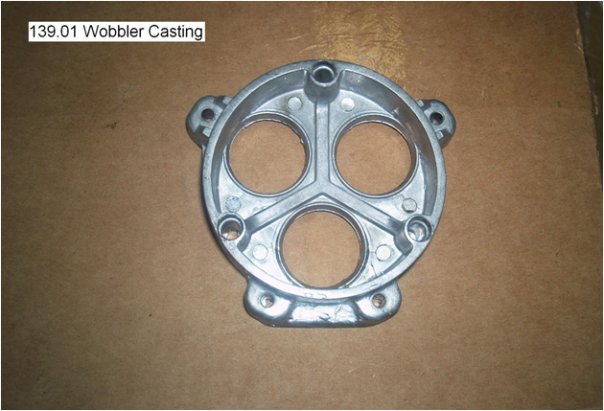Kinetic Die Casting also makes Die Casting Unit Die Tooling. Unit die tooling is usually larger than die cast tooling inserts and usually smaller than a complete mold. Unit die tooling uses less steel than a complete mold, but more …
Continue reading
Tag Archives: Kinetic Die Casting Company
Die Casting Parts Manufactured using Lean Manufacturing.
Lean Manufacturing Die Casting. Die Casting Parts Manufactured using Lean Manufacturing.
Everyone believes the die casting is solely a “Batch & Que” manufacturing process. Most die casting companies operate using a the department layout (example.
- Die Casting Department – 500 Parts produced day one (1) shipped to the trim department on day two (2).
- Trimming Department – 500 Parts get trimmed on day two (2) and get shipped to machining department on day three (3).
- Machining Department – 500 Parts get machined in machining department on day three (3) and sent to quality department on day four (4).
- Quality Department – 500 Parts get inspected on day four (4) and sent to shipping department on day five (5).
- Shipping Department – 500 Parts are packaged on day five (5) and shipped to customer on day six (6).
- 500 Parts are shipped at least six days after initial production in the die casting machine.
500 parts produced on the first day of the week get shipped (6)six days later, typically next week. If there is a one (1) day Que in each department, it will add another four (4) days to the six (6) days making the delivery ten (10) days after production.
6 – 10 additional days is a long time to wait for die casting parts for some customers.
The Kinetic Die Casting Company Difference –
What if a die casting company changed from the department layout and went to lean manufacturing production cell layout?
- Die casting one (1) part in one (1) minute is sent to trimmer. Continues making one (1) part a minute until 500 parts complete in 500 minutes or 8.33 hours.
- Trimmer trims (1) part 1/4 (.25) minutes and sends (1) part to machine area. Continues trimming next 499 parts.
- Machine taps three holes in one (1) part 1/4 (.25) minutes and sends one (1) part for inspection. Continues machining 499 parts.
- Inspector checks one (1) part for 1/4 (.25) minutes and sends one (1) part to shipping. Continues inspecting 499 parts.
- Shipper packs one (1) part in box 1/8 (.12) minutes. Continues packing 499 parts.
- 500 parts complete and shipped to customer in less than ten (10) hours, one shift.
Kinetic Die Casting Company uses a lean die casting manufacturing process to produce die casting parts for our customers. At Kinetic Die Casting Company, in 99% of the 500 part or less production orders, we ship them today.
Get Die Casting Part Prices from us today:
http://www.kineticdiecasting.com/replyform.html
Kinetic Die Casting manufactures die cast parts for their customers. If you would like to know more about what is die casting or if you would like a quote, please visit our website:Kinetic Die Casting Company
The Most Commonly Used Die Casting Alloys
The Most Commonly Used Die Casting Alloys. The power and usefulness of die casting really rely on the die casting alloys which were utilized in the procedure. Die casting has been known in the metalworking industry for coming up with the best statistics of mass produced items. These are utilized in different sectors like in customer, industrial and the commercial arena. You can discover aluminum parts such as automobile parts, connectors utilized in houses parts, silk faucet parts and on numerous toys.
Die casting is done when the melted metal is forced under high pressure into molds or dies that are created of reusable steel. This can come up with intricate shapes with outstanding degree of repeatability and precision. Such features will be determined by the categories of die casting alloys utilized to manufacture the products such as die cast speakers.
The most ordinary die casting alloys that are used for this intention include aluminum, zinc, copper, magnesium, lead and tin. There are also particular die casting alloys that are exploited in the procedure that include AA 380, ZAMAK, AA 386, AA 384, zinc aluminum, AA 390 and AZ91D magnesium. If the method will operate magnesium, aluminum, brass and zinc castings, the weight limit must not go beyond 44 lb for magnesium, 70 lb for aluminum, 10 lb for brass and 75 lb for zinc.
These are the key die casting alloys and a general idea on their rewards.
1. Zinc is recognized as the simplest to cast. It has high ductility and can naturally be plated.
2. Magnesium is the simplest to machine.
3. Aluminum has high thermal properties and conductive to electricity.
4. Copper is known for having the uppermost mechanical properties utilized in die cast.
5. Lead and tin have a close range dimensional accuracy and have high density.
Kinetic Die Casting manufactures custom metal parts to their customer. If you would like more information about Kinetic Die Casting, please visit our website:Kinetic Die Casting Company
Die Casting Alloys
What is die casting? Die casting is the procedure where melted metal alloy, like aluminum or zinc, is pushed by a piston into a steel die and left under high pressure until the metal hardens. This is how metal parts for automobile die casting, heatsink die casting, and roof tile plates.
There are definite metals that are utilized as die casting alloys. Alloys utilized in die casting are combinations that hold two or more metals. Only metals which do not hold iron are utilized as die casting alloys. Such metals are zinc, aluminum, copper, magnesium, lead, and tin. Zinc is the simplest to die cast among these alloys because it is very sturdy, has the highest ductility has a low melting point, and has a high impact strength. It is the best for creating tiny metal parts. Aluminum is best recognized to be lightweight. What makes it an excellent die cast alloy is that it has high dimensional stability which is crucial in fabricating thin walls for the metal parts. Aluminum also has high corrosion resistance which helps extend the life of the metal parts. Copper has the highest mechanical characteristics among the die casting alloys. It also has high dimensional stability and high corrosion resistance like aluminum, and has high hardness as well. Magnesium is the metal which is the simplest to machine. It has an exceptional strength to weight ratio which is an essential property for building metal parts. Lead and tin are the first metals to be die casted. They are also corrosion resistant and have high densities that cause them to be strong.
These metal alloys have their own properties that make a unique metal part the way it is. Having the right alloy for die casting is necessary for the product to come out right.
Kinetic Die Casting makes great quality aluminum, and Zinc Die Casting If looking for a job or would like a quote please visit our website:Kinetic Die Casting Company
500 Die Casting Parts Every Day
How many parts can we make a day? 500 Die Casting Parts a Day.
Kinetic Die Casting Company makes many types of die casting parts. In most cases we make a part a minute. The larger or heavier a die casting part, the slower the production rate. Some of these parts are large roof tile mold castings that are 17″ long.
Aluminum Roof Tile Mold
These roof tile molds are produced one part every two or three minutes or about 250 parts a day in a single shift.
Some of these parts are small clips used in lighting fixtures that are only 1/8″ long. In one case, we make over 3,000 water pump housings in a single day.

Water Pump Housing
Some of our customers order fewer than 500 parts so we produce their purchase order in a single day. Contact Kinetic Die Casting Company to purchase your aluminum parts or zinc parts today. Buy thousands or fewer than 100 parts. Call 818-982-9200.
Kinetic Die Casting manufactures aluminum military parts, aluminum hardware, and aluminum die castings. Visit our website for a quote: Kinetic Die Casting Company
Different Die Casting Alloys for Different Purposes
Different Die Casting Alloys for Different Purposes. There are several die casting alloys that can be utilized to manufacture high grade and tremendously strong metallic parts like Aluminum die casting. Die casting requires the utilization of liquefied alloys which will be injected into molds to create metal parts.
Die casting alloys utilized for metal casting ought to have lower melting point. Alloys that can be thawed simply allows for faster production procedures and guards the die or mold from being injured.
For little metal parts, one of the finest die casting alloys that can be utilized is zinc. Zinc alloy is simpler to cast and have better ductility than other materials. It can also attain high impact strength. Most significantly, zinc alloy can be plated easily.Furthermore, you can use hot chamber zinc die casting, which also impacts the price of the part.
Aluminum on the other hand is very lightweight, simple to melt, and have better artistic qualities. By employing aluminum as die casting material, manufacturers can produce parts at a faster rate and can make parts like aluminum die cast boxes. That is because aluminum is very stable at high temperature and will cool faster thus reducing the threat of contamination and oxidation. Because of these, aluminum alloys can oppose corrosion better than other materials.
Other kinds of die casting alloys that are appropriate to use for high pressure and high temperature castings are magnesium, copper, lead and tin. Magnesium is the lightest alloy that can be utilized for casting while copper offer greater strength and high resistance to corrosion. Magnesium alloy is also inexpensive and easier to machine after production. Tin and lead on the other hand can be used to produce near finished parts.
Kinetic Die Casting manufactures a lot of aluminum rooftile plates , trim tile molds, and military die casting. If you would like a quote, please visit our website: Kinetic Die Casting Company

